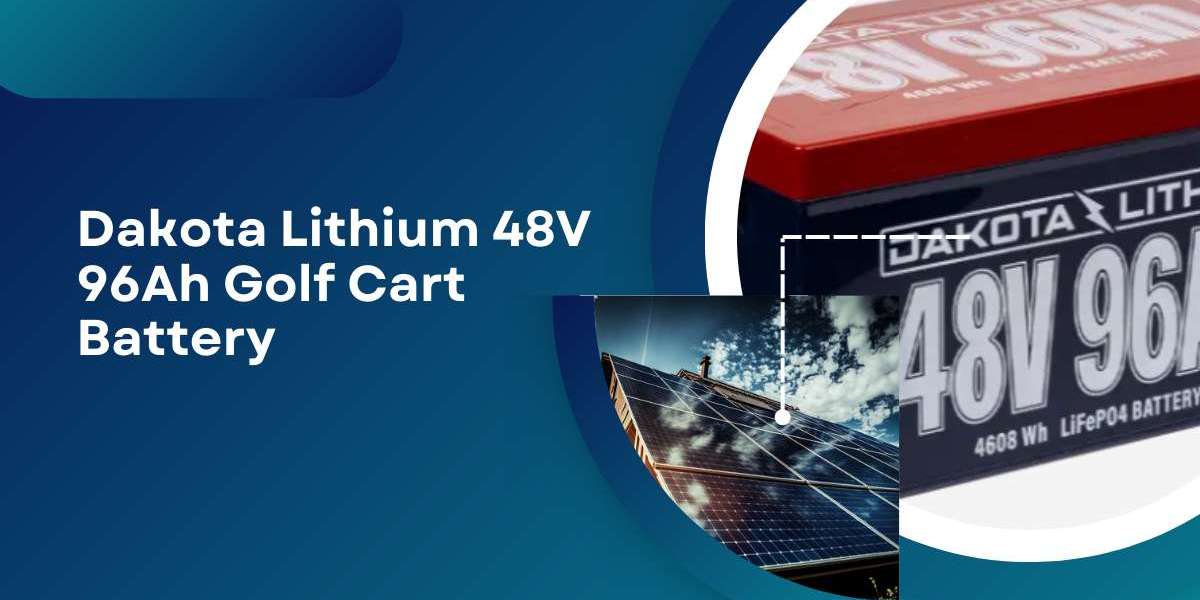Golf carts, utility carts, and other motorized carts rely on cart batteries as their power source, and choosing the right one makes all the difference in performance, longevity, and reliability. When selecting the correct battery, factors like type, capacity, maintenance needs, and environmental impact can significantly influence the performance of your cart. Let's explore what to consider and how to find the best battery for your cart needs.
What Are Cart Batteries?
At their core, cart batteries are rechargeable batteries that provide the energy needed to power motorized carts. These batteries come in various types, each with unique strengths suited for different uses, whether for golf carts, industrial utility carts, or neighborhood electric vehicles. The most common types include lead-acid, lithium-ion, and absorbed glass mat (AGM) batteries.
Critical Components of Cart Batteries
To understand cart batteries, it's essential to know what components make them work:
- Electrodes (Anode and Cathode) are responsible for the chemical reactions that generate electricity.
- Electrolyte: The medium facilitating the flow of electrical charge between the anode and cathode.
- Separators prevent short circuits by keeping the anode and cathode from touching.
- Casing: Protects the battery's internal components and ensures safety.
Each of these parts is vital to the efficiency and safety of the battery, making it essential to choose a quality battery that ensures reliable power and longevity.
Types of Cart Batteries
Lead-Acid BatteriesLead-acid batteries are traditional and widely used for carts due to their affordability. They offer decent energy storage and are available in flooded gel or AGM types, each with specific pros and cons.
Lithium-Ion Batteries Lithium-ion batteries are famous for their high energy density, longer lifespan, and lighter weight. Though more costly upfront, their extended lifespan often provides better long-term value.
Absorbed Glass Mat (AGM), BatteriesAGM batteries are a type of lead-acid battery but with a twist. They're maintenance-free, durable, and less likely to leak, making them safer and more convenient.
Why Battery Choice Matters
The choice of cart batteries impacts your cart's range, speed, and how long it can go without recharging. The correct battery can prevent frequent replacements, saving money and reducing downtime.
Comparing Lead-Acid and Lithium Batteries
When it comes to performance and value, lithium batteries often stand out. Here's a quick comparison:
- Weight: Lithium batteries are significantly lighter, reducing strain on the cart.
- Maintenance: Lead-acid batteries require periodic maintenance; lithium batteries do not.
- Lifespan: Lithium can last up to three times longer than lead-acid batteries.
- Cost: Lead-acid is more affordable initially, but lithium offers better value over time.
How to Choose the Right Cart Battery
Consider these factors when selecting a cart battery:
- Usage Frequency: Lithium batteries may be ideal for frequently using your cart.
- Climate: Colder climates can impact battery performance, especially lead-acid types.
- Budget: Lithium has a higher upfront cost but may be more economical in the long run.
Battery Capacity Explained
Battery capacity, measured in ampere-hours (Ah), is a crucial indicator of how long a battery will last per charge. Higher capacity generally means more run-time but can lead to a heavier battery.
Importance of Voltage in Cart Batteries
Cart batteries typically come in 6V, 8V, and 12V. The voltage of your battery setup determines how much power is available to your cart, impacting both speed and power output.
Battery Life and Cycle Count
The cycle count refers to the number of complete charge/discharge cycles a battery can undergo before its capacity drops significantly. Lithium batteries offer over 2,000 cycles, while lead-acid batteries usually support around 500-1,000 cycles.
Signs Your Cart Battery Needs Replacement
Some indicators that it may be time to replace your cart batteries include:
- Decreased range or power.
- Taking longer to charge.
- Bulging or leaking casing.
- Frequent charging requirements.
Proper Charging Techniques
To maximize your battery's lifespan, follow these charging tips:
- Charge after every use to avoid deep discharging.
- Avoid overcharging, which can degrade the battery over time.
- Store appropriately during the off-season to prevent loss of capacity.
Battery Maintenance Basics
Good maintenance practices can help extend the life of cart batteries:
- Keep connections clean to ensure optimal performance.
- Check water levels regularly for lead-acid batteries.
- Inspect for damage to prevent leaks and corrosion.
Cleaning and Care Tips
Regular cleaning prevents build-up that can impact performance:
- Use a damp cloth to remove dust and debris.
- Apply battery terminal protectors to avoid corrosion.
Safe Storage Practices
Store cart batteries in a cool, dry place with a partial charge if they will not be used for an extended period. This prevents self-discharge and preserves battery health.
Winter Care for Cart Batteries
During colder months, storing its batteries in a temperature-controlled area is vital. Extreme cold can reduce capacity and impact overall lifespan.
Battery Disposal and Recycling
When it's time to replace your cart battery, ensure you dispose of it correctly. Most battery retailers offer recycling services, and local disposal programs may also accept used batteries.
Common Myths About Cart Batteries
Some common myths include:
- "All batteries are the same." In reality, lithium and lead-acid batteries have vastly different characteristics.
- "Frequent charging harms the battery." Regular charging can extend a battery's life.
Best Brands for Cart Batteries
Top brands trusted in the industry include:
- Trojan: Known for reliable lead-acid options.
- Duracell: Offers both lead-acid and lithium options.
- Lithium Battery Power: This company specializes in high-performance lithium options.
Cost Considerations
Factors that influence the cost include battery type, brand, and capacity. While lithium batteries are more expensive initially, their longer life may justify the price.
Frequently Asked Questions
What's the best type of cart battery for long-term use?
Lithium batteries are usually the best choice for longevity, given their long cycle life and minimal maintenance.
How often should I charge my cart battery?
Charging after every use is recommended to prevent deep discharge, which can shorten battery life.
Can I use a car battery for my cart?
Car batteries are not designed for deep cycle use and will degrade quickly in a cart.
Is it okay to store my battery in a cold garage?
While storage in a cool place is good, extreme cold can damage batteries. A temperature-controlled environment is preferable.
How do I know when my cart battery is fully charged?
Most chargers have indicators. It's essential to use a charger compatible with your battery type.
Conclusion
Selecting the right cart batteries can transform your cart's performance, cost-efficiency, and lifespan. By understanding battery types, capacities, and maintenance needs, you're equipped to make a choice that keeps your cart running smoothly for years to come.








